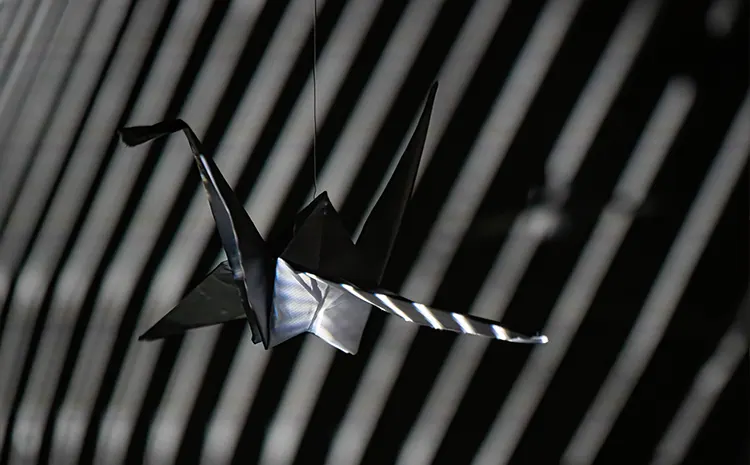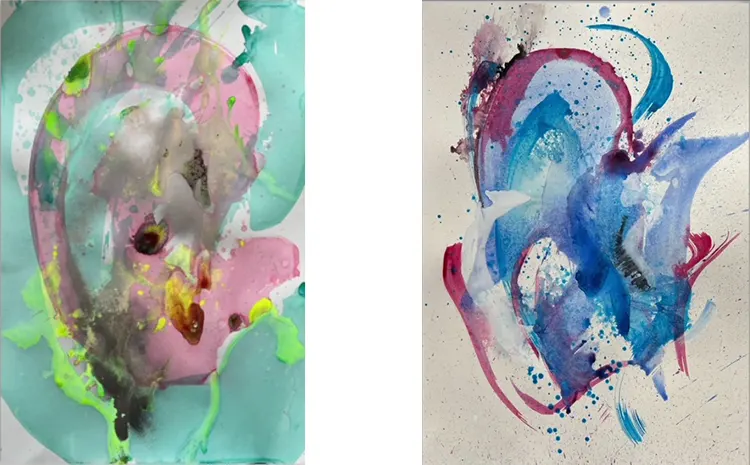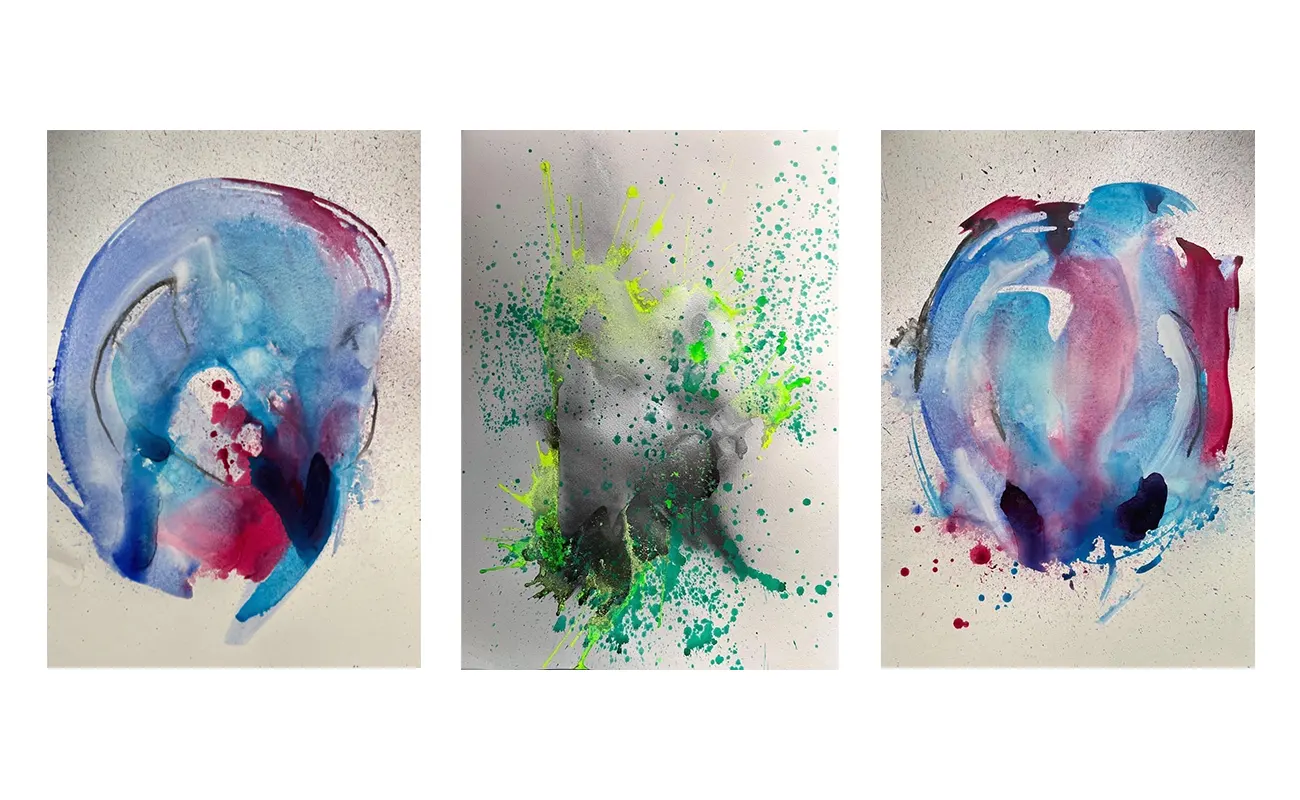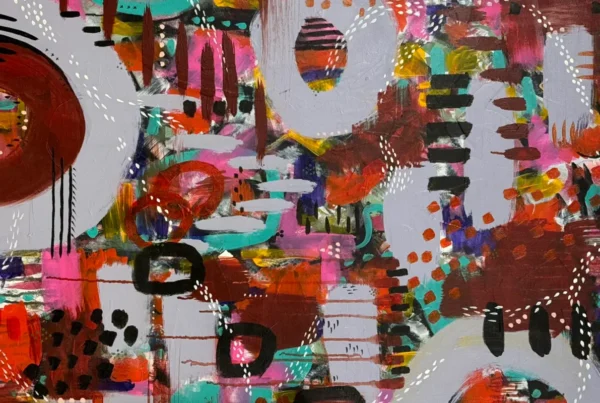“Making art is a tough, intense business. There are setbacks and they are part of the career of every young artist.”
Philipp Geist: Mastering the Art of Light and Projection
Philipp Geist, a Berlin-based artist, has been captivating international audiences with his innovative and interdisciplinary work since 1996. Geist’s practice spans a wide range of mediums, including projection mapping, painting, photography, and fine art printmaking. He is renowned globally for his large-scale light art installations in public spaces, exhibitions, and collaborative audio-visual projects with various musicians.
Geist perceives himself as a painter who adeptly manipulates diverse media. His artwork predominantly encompasses an array of light art, video mapping projects, and traditional painting on paper and canvas, supplemented by fine art prints. Geist’s creative process often involves employing overlays and multiple levels within both his painting and projection works, infusing a unique depth into his creations.
Incorporating analog images into his projections, Geist skilfully animates them into three-dimensional strata. He possesses a profound fascination with the analog processes of color application, structure formation, and overlay techniques. The dynamics of movement, the contrast between sharpness and blurring, are pivotal elements in both his analog and digital works, amplifying their complexity and allure.

A Convergence of Photography and Painting
Philipp Geist’s illustrious artistic journey commenced in the tranquility of a forest near Weilheim in Upper Bavaria, where he unveiled his inaugural exhibition in 1996, marking a pivotal moment in his career some 27 years ago. As a young prodigy, his initial foray into the realm of art was through the evocative lens of photography, a medium he later seamlessly intertwined with his budding interest in painting. This synergistic union of distinct art forms culminated in his creation of audio-visual projects featuring photographic works, thereby redefining his artistic landscape.
The latter part of the 90s witnessed Geist’s exploration of video and moving images, a venture he undertook to attune himself more profoundly with the rhythm and timbre of music. This progression led to a plethora of audio-visual collaborations spanning an eclectic range of music genres, including classical, electro, drone, techno, noise, and jazz.
In 2005, Geist’s creative prowess was illuminated on a larger scale through his first grand video mapping installation in Zurich, a venture that extended over several weeks. This undertaking allowed him to delve into the intricacies of three-dimensional architecture, further expanding the horizons of his artistic capabilities.
Geist’s immersive light installations stand as a testament to his innovative approach to art. He meticulously strives to incorporate the space between the projector and the structure, object, or surface upon which his projections unfold. To Geist, this integration is the essence of what makes light projections truly unique.
His artistry extends beyond static surfaces as he projects onto dynamic mediums such as gauze fabrics, fog, and water. Geist also emphasizes the significance of viewing from the projector’s perspective, a factor he deems crucial to understanding the nature of his art. Within his immersive installations, visitors are transformed from mere spectators to integral components of the artwork, truly encapsulating Geist’s vision of an all-encompassing artistic experience.

Philipp Geist: Immersive Light Installations Redefining Art Experiences
The creative methodology employed by Philipp Geist is multifaceted, reflecting the nature of the project in hand. For his outdoor and light installations, meticulous technical planning is indispensable, intertwined with the generation of artistic content relevant to the architectural setting. His pictorial endeavors, on the other hand, range from swift series of works on paper to more protracted, contemplative processes involved in creating paintings on canvas. These often involve repeated drying phases and thoughtful consideration regarding the next course of action.
The divergence between analogue and digital work is apparent in Geist’s practice, even though the visual language and outcomes converge again in the final stages. His artistry is primarily a solitary pursuit, carried out in his Berlin studio over extended periods of time.
Geist typically conceives and develops his installations over several weeks or even months, despite the fact that they are usually exhibited onsite for only a few days or weeks. As a result, photographic works and film recordings are crucial to preserving the ephemerality of these installations. To further immortalize his temporary installations, Geist transmutes captured images into LED lightboxes, fine art prints, and overpaintings. In the latter, he overlays installation views with paint, deftly merging different themes, thereby extending the life of his installations beyond their initial existence.

Philipp Geist Explores Cultural Landscapes: Projections and Origami Unite
Renowned artist, Philipp Geist, demonstrates a profound fascination with destinations of exceptional interest, ranging from the grandiose to the intimate. The lure of Japan, with its rich cultural tapestry, has stirred his creative aspirations, prompting him to consider mounting an installation in this land of the rising sun. His attraction extends beyond geographical locales to encompass the allure of historical sites teeming with compelling narratives.
Philipp’s creative oeuvre is distinguished by his innovative use of origami, a traditional Japanese art form. He has executed numerous projects that integrate projections of various forms such as cranes or swans onto hundreds of origami pieces, effectively transforming them into immersive spatial installations. Furthermore, his artistic exploration extends to the individual level, with projections targeted onto single origami cranes. These endeavours are part of his ongoing work in what he terms ‘mini-mappings’, a focused exploration of these hidden spaces.
For emerging artists at the dawn of their careers, Geist offers insightful advice. Persistence, he advocates, is a paramount virtue in the journey of artistic development. Cultivating one’s unique artistic signature requires tenacity and unwavering commitment to the chosen path. The road to artistic fulfillment, he acknowledges, is often fraught with challenges. It is a demanding and intense endeavour, but setbacks, he argues, are integral to the process. Far from dissuading young artists, he views these challenges as essential components of every artist’s professional journey.






